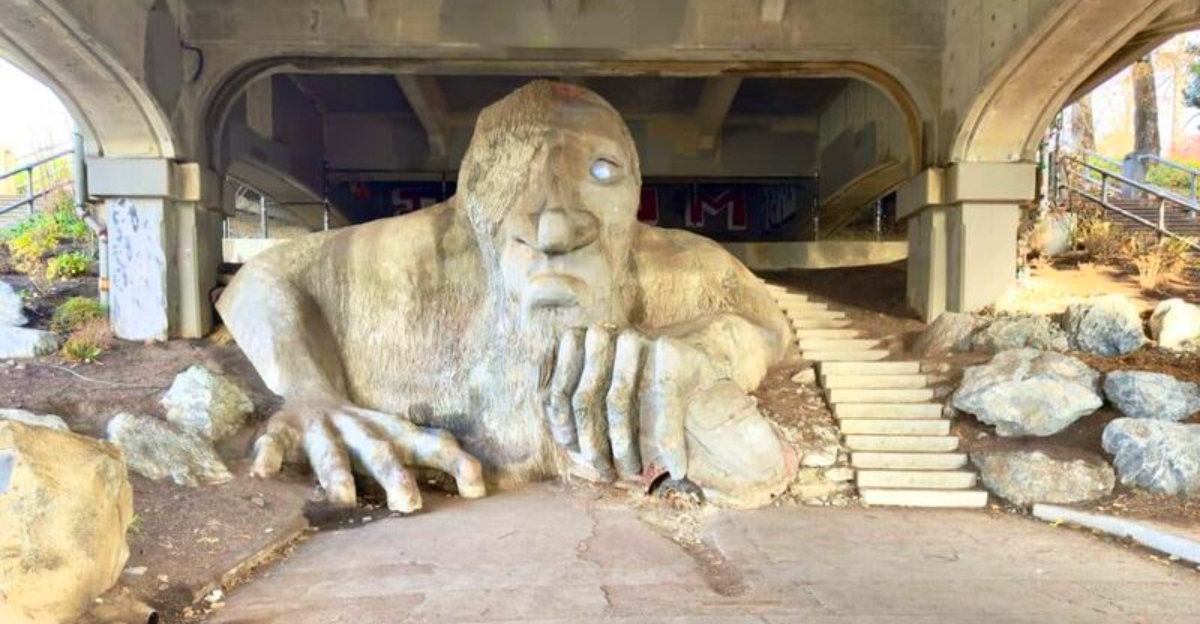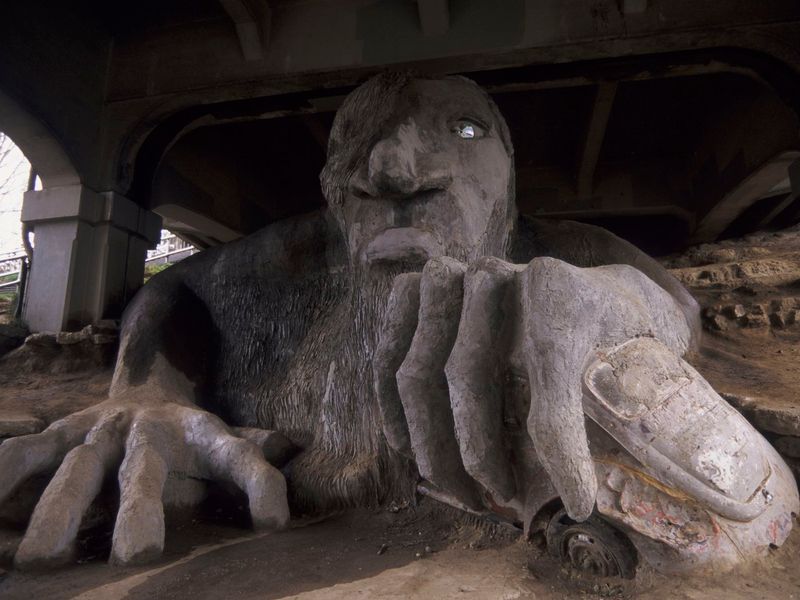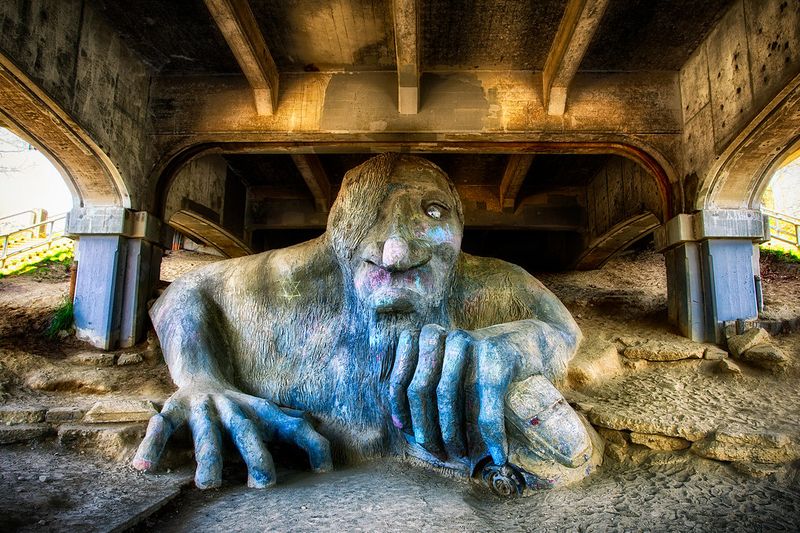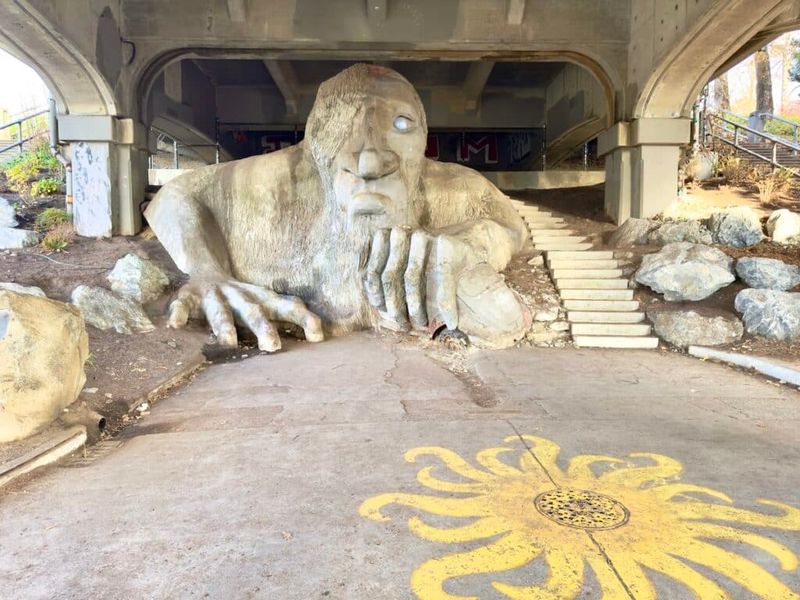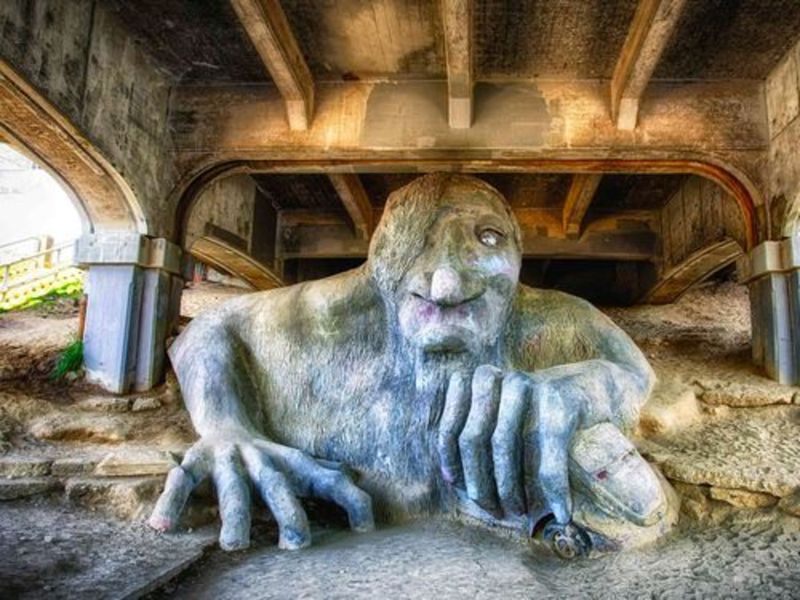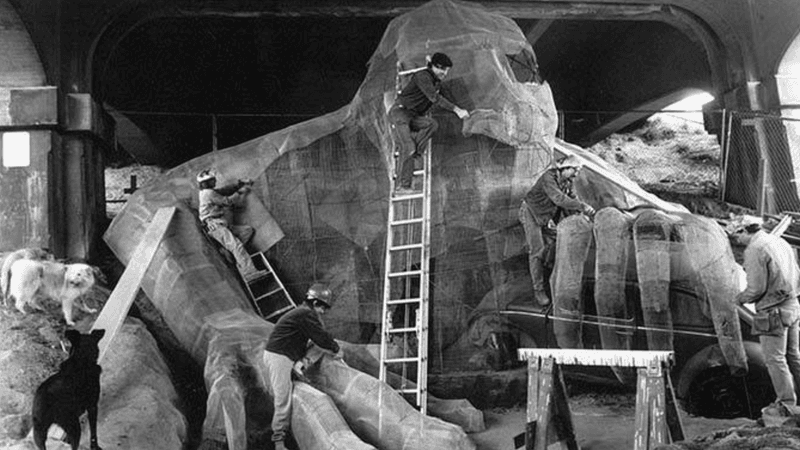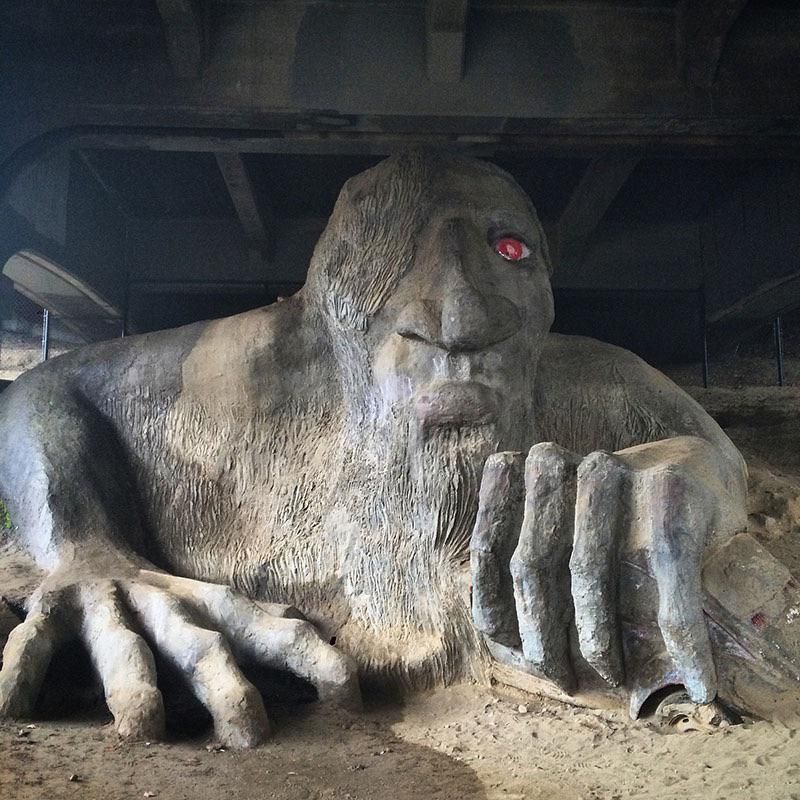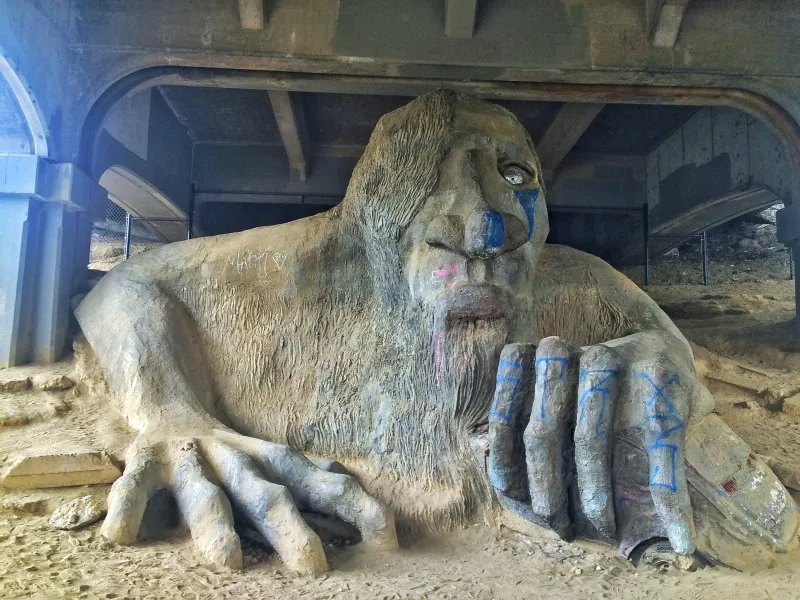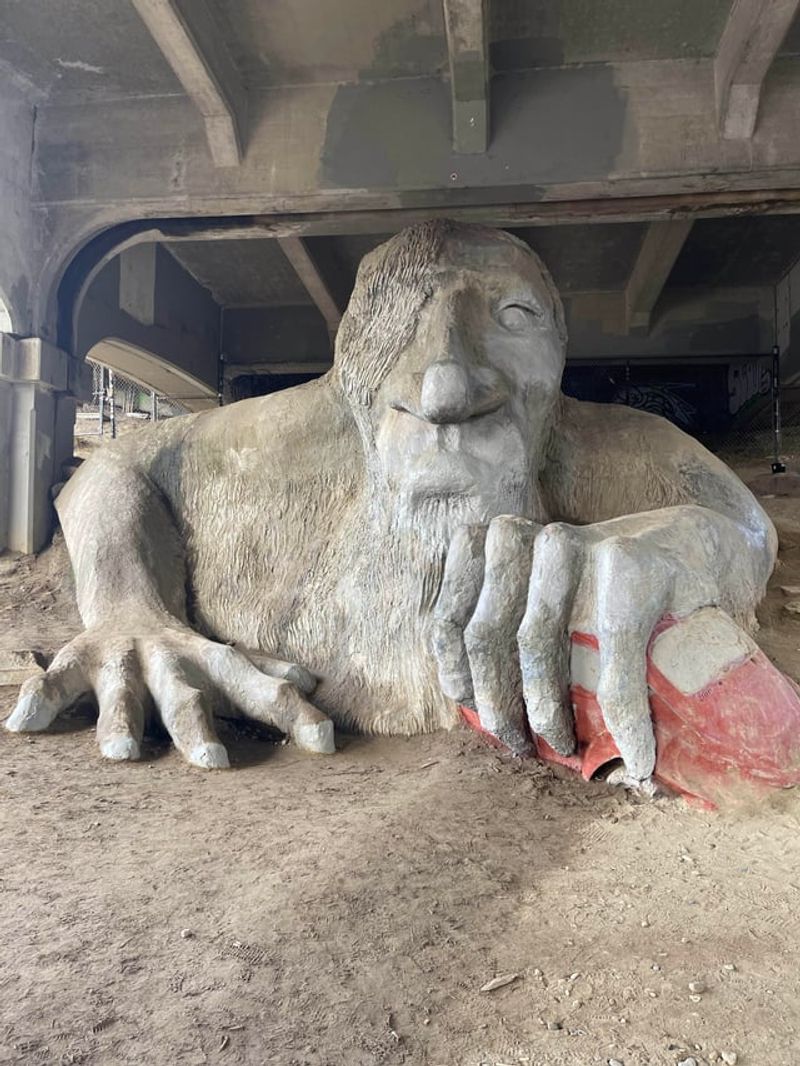Hidden under a busy Seattle bridge, a massive concrete giant clutches a Volkswagen Beetle and stares out with a single gleaming eye. The Fremont Troll isn’t just a sculpture—it’s a symbol of how art can transform forgotten spaces into beloved landmarks. Born from a competition to clean up a troubled area, this 18-foot guardian has become one of the city’s most photographed attractions and a testament to Fremont’s quirky, creative spirit.
From Trouble Zone to Troll Territory
Beneath the north end of the George Washington Memorial Bridge—better known as the Aurora Bridge—a remarkable transformation took place in Seattle’s Fremont neighborhood. Back in the late 1980s, this under-bridge area was anything but inviting. Trash piled up, illegal dumping was common, and unsavory activities made residents avoid the space altogether.
The Fremont Arts Council decided enough was enough. They launched an art competition in 1989 to reclaim and revitalize this neglected stretch. The winning proposal came to life in 1990 as the Fremont Troll: an enormous concrete and steel sculpture that appears to be climbing out of the hillside, gripping a real Volkswagen Beetle in one massive hand.
What began as a creative solution to urban blight quickly became one of Seattle’s most cherished public artworks, proving that imagination and community effort can turn eyesores into icons.
Myth, Materials and Symbolism
Scandinavian folklore tells tales of trolls lurking beneath bridges, waiting for unsuspecting travelers. The Fremont Troll brings this ancient myth into modern Seattle with a playful twist. Created by artists Steve Badanes, Will Martin, Donna Walter, and Ross Whitehead, the sculpture weighs approximately 13,000 pounds and stands as a bridge between old-world storytelling and contemporary urban art.
Steel rebar forms the skeleton, wrapped in wire mesh and covered with layers of concrete to create the troll’s craggy, weathered appearance. The most surreal detail? A genuine Volkswagen Beetle—complete with a California license plate—crushed in the troll’s left hand, as if plucked straight from the roadway above.
This combination of mythological scale, found-object creativity, and urban context gives the Troll both whimsical charm and surprising depth, making visitors smile while appreciating the artistic vision behind it.
A Landmark and Pop-Culture Star
October 31, 1990 marked the official unveiling of the Fremont Troll, and Halloween proved the perfect birthday for this bridge-dwelling giant. Located at N. 36th Street and Troll Avenue N., the sculpture quickly became a must-visit destination for both tourists and locals exploring Seattle’s eclectic neighborhoods.
Over three decades, the Troll has transcended its role as neighborhood art to become a genuine pop-culture phenomenon. It has appeared in films, video games, travel documentaries, and countless Instagram feeds, cementing its status as a symbol of Seattle’s playful, unconventional character.
Recognition came officially in 2005 when the city renamed the street beneath the bridge “Troll Avenue” in the sculpture’s honor. More than just a statue tucked under a bridge, the Troll serves as a cultural anchor for Fremont’s famously quirky identity and a reminder that great art doesn’t always belong in museums.
Visit Tips and Why It Matters
Planning a visit to the Fremont Troll couldn’t be simpler—it’s free, accessible year-round, and located at N. 36th Street under the Aurora Bridge in Seattle’s 98103 zip code. Parking directly at the site can be tight, especially on weekends, so walking from nearby Fremont businesses or taking public transit often makes for a smoother experience.
Once you’ve snapped your photos with the Troll, take time to explore the surrounding Fremont neighborhood. Local cafés, vintage shops, and other public art installations—including the famous Fremont Rocket and Lenin statue—are all within walking distance, offering a full afternoon of quirky discoveries.
Beyond being a photo opportunity, the Troll represents something deeper: how public art can reclaim underutilized urban spaces and become emblematic of community spirit. The next time you wander beneath the Aurora Bridge, look for the giant reaching from the shadows.
The Artists Behind the Giant
Four creative minds joined forces to bring the Fremont Troll to life: Steve Badanes, Will Martin, Donna Walter, and Ross Whitehead. Their winning proposal beat out dozens of other submissions in the 1989 Fremont Arts Council competition, demonstrating both artistic vision and practical problem-solving skills.
Each artist brought unique talents to the project. Badanes, an architecture professor, contributed structural expertise. Martin added sculptural finesse. Walter brought conceptual depth, and Whitehead rounded out the team with construction know-how. Together, they worked through 1990 to transform tons of concrete, steel, and one unfortunate Beetle into Seattle’s most beloved bridge guardian.
Their collaborative approach reflected Fremont’s community-focused ethos. Rather than creating art from an isolated studio, they worked on-site, engaging with neighbors and passersby. This openness helped the Troll feel less like an imposed artwork and more like a homegrown neighborhood treasure from its very first day.
The Troll’s Glowing Eye Secret
Look closely at the Fremont Troll’s face and you’ll notice something unusual: one eye gleams with an otherworldly shine while the other remains hidden. That glowing eye isn’t concrete or glass—it’s actually a hubcap, likely from the very Volkswagen Beetle the troll clutches in its hand.
This clever detail adds personality and life to the sculpture. During the day, the hubcap catches sunlight and reflects passing clouds. At night, car headlights from the bridge above create an eerie, watchful glow that makes the Troll seem truly alive and aware of visitors approaching.
The single-eye design also connects to troll mythology. Many folk tales describe trolls as cyclops-like creatures or monsters with unusual features. By giving their creation this distinctive characteristic, the artists honored traditional storytelling while adding a touch of automotive whimsy. It’s details like this that transform the Troll from simple sculpture into something genuinely magical.
Fremont’s Quirky Art Legacy
The Fremont Troll didn’t emerge in a vacuum—it’s part of a neighborhood-wide embrace of eccentric public art that has earned Fremont the unofficial title “Center of the Universe.” Walk a few blocks in any direction and you’ll encounter more delightfully odd installations that challenge conventional ideas about what belongs in public spaces.
A Cold War-era rocket adorns the facade of a building on Fremont Avenue. A 16-foot statue of Vladimir Lenin, rescued from Slovakia after the Soviet Union collapsed, stands at the intersection of Fremont Place and N. 36th Street. Every summer solstice, the neighborhood hosts a massive parade featuring painted cyclists and creative floats.
This concentration of unconventional art reflects Fremont’s independent spirit and resistance to corporate homogenization. The Troll serves as the anchor and most famous representative of this philosophy, proving that neighborhoods can maintain distinctive character through community-supported creativity rather than commercial development alone.
Preservation and Community Guardianship
Maintaining a 13,000-pound concrete sculpture exposed to Seattle’s rain, temperature swings, and thousands of climbing visitors presents ongoing challenges. Unlike museum pieces protected behind glass, the Fremont Troll endures constant interaction—kids climb on it, people lean against it, and weather slowly erodes its surface year after year.
The Fremont Arts Council and local community members have stepped up as unofficial guardians. Regular cleaning removes graffiti and debris. Periodic structural assessments check for cracks or weakening in the concrete. When necessary, artists and volunteers apply fresh concrete patches to areas showing significant wear, carefully matching the original texture and color.
This community guardianship model demonstrates something important about public art: its longevity depends not just on initial creation but on sustained local investment and care. Fremont residents don’t just tolerate their Troll—they actively protect it, ensuring future generations can experience the same bridge-dwelling giant that has welcomed visitors since 1990.
